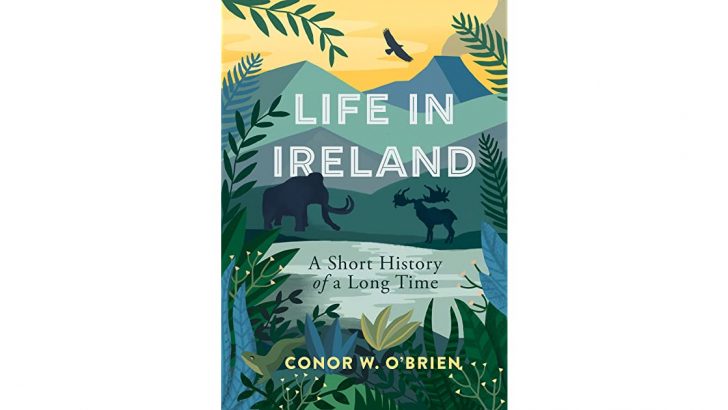Life in Ireland: A Short History of a Long Time
by Conor W. O’Brien (Merrion Press, €16.95/£15.99)
Joe Carroll
This potted history of plant and animal life in Ireland stretches over a long period – about 550 million years. So there is a lot of evolution to pack into 264 pages. The author, a lifelong enthusiast for wildlife and nature, has already written About Ireland Through Birds, but here he is down among the dinosaurs, woolly mammoths, giant goats and reindeer which once roamed Ireland.
For most of the time it was nothing like the Ireland we know today which can confuse things for the non-geologist. What we call Ireland was more often a fragment of a massive continent which stretched over two hemispheres and was often half submerged under tropical seas. Nevertheless it was during those aeons that the foundations of our island were laid. In part one the author follows the fossil trail of the pre-historic fauna whose traces are to be seen in our earliest rocks around the coastline.
In part two, as the ice advanced and retreated across Ireland strange beasts came and went like the huge elephant whose tooth was found in 1990 in a river in Co. Down, woolly mammoths and giant goats and reindeer. Much dreaded was the spotted hyena whose bones among the remains of some of his victims were found in Castlepook cave in Co. Cork.
Primitive
In part three, primitive man has arrived at the end of the Ice Age to share the island with wolves and boars in the forests which covered Ireland. It was said a squirrel could cross Ireland without touching the ground. This would be a native red squirrel and not the much later grey squirrel interloper which has almost wiped out the native red, now however making a comeback. There is much information about the animal and plant life of these early times and how they contributed to the early farmers’ existence. Marine life around our shores is also described.
Unfortunately some of the finest specimens of our birds like the golden eagles, cranes, buzzards and red kites were hunted and poisoned to extinction in some cases. Farmers did not always appreciate their swooping on lambs and other vulnerable livestock.
Good news
Now the good news is that the eagle is being lured back and there is even talk of the ‘re-introduction’ of the grey wolves who were wiped out 200 years ago. As the ‘top predator’ the wolves were useful for culling the multiplying red deer. They could again be useful in this role, say proponents, allowing foliage to flourish and “benefit all the smaller creatures that inhabit our mountains and forests helping whole ecosystems return to their former splendour”.
The epilogue is a plea for the ‘re-wilding of Ireland’. We have lost more of our wildlife in the last 50 years than we did in thousands of years before it. It is estimated that around 300 species are in danger of extinction.
Short as it is, this book is an urgent wake-up call to us all, a reminder that time is running out.



